Categories: Featured Articles » Practical Electronics
Number of views: 19647
Comments on the article: 1
Essential Tools and Devices for Beginners to Study Electronics
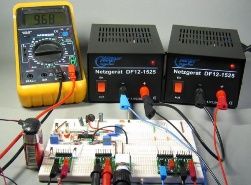 Currently, this problem is solved quite easily. On any radio market, for starters, you will have to buy several screwdrivers (a set is better), to turn it off - tighten M2.5 screws - 6, wire cutters - side cutters, and of course a soldering iron. At first, an ordinary soldering iron with a capacity of 25 - 40W with a copper sting. Such a soldering iron can be called educational. If such a soldering iron is supplemented with a simple power regulator, then practically anything can be soldered.
Currently, this problem is solved quite easily. On any radio market, for starters, you will have to buy several screwdrivers (a set is better), to turn it off - tighten M2.5 screws - 6, wire cutters - side cutters, and of course a soldering iron. At first, an ordinary soldering iron with a capacity of 25 - 40W with a copper sting. Such a soldering iron can be called educational. If such a soldering iron is supplemented with a simple power regulator, then practically anything can be soldered.
If soldering with this soldering iron will turn out “perfectly and perfectly”, and it will not be simply abandoned, then the next step can be considered the purchase of a real branded soldering iron, for example, “Weller” with a fireproof tip and a temperature setter. Any soldering iron will need solder, POS-61, and flux are best. At first, an ordinary pine rosin is enough, which should be transparent and light. Solder is best in the form of a thin rod with a diameter of 1 - 0.8mm and even thinner. It all depends on the "subtlety" of the work performed.
In addition to a soldering iron and nippers, you will also need to purchase small pliers, several different knives, best of all scalpels, tweezers of various sizes. It’s good if there are needles from disposable syringes of various diameters in the household, and sometimes the syringes themselves.
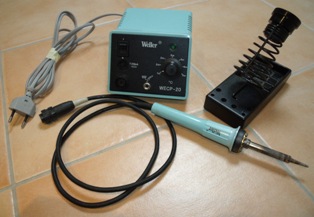
Another tool, which can not be dispensed with in the future, is a small hand-held “drill” for drilling holes on boards for the conclusions of parts. Now there are no problems with this either: miniature motors are sold on radio markets on which collet cartridges can be mounted. A set of collets allows you to drill holes with a diameter of 0.5 ... 2.5 mm. Drills are also sold there.
When working with fiberglass, thin drills become blunt very quickly. To sharpen them you have to use a diamond file. A few movements along the cutting edges - and the drill again as new. The accuracy of such movements, as one movie hero used to say, is achieved by practice.
But, if there is absolutely no desire to drill boards and sharpen drills, then it is best to use all kinds of prototyping boards. Now there are a great many of them. Parts on such boards are soldered into the finished holes, and the connections between them are made by wire jumpers.
Very good to purchase solderless breadboards. True, this is somewhat expensive, but it guarantees reusable use of parts, and also eliminates their damage from overheating during soldering.

Measuring equipment
And so, when the first circuit is assembled, it becomes necessary to verify it. And if used parts are used, then they must be checked before installation. The question is what? For these purposes, the easiest way to purchase electronic multimeterAt first, inexpensive, something like DT838, which allows you to measure DC voltage up to 1000V, AC up to 750V, DC up to 10A, resistance up to 20MOhm.
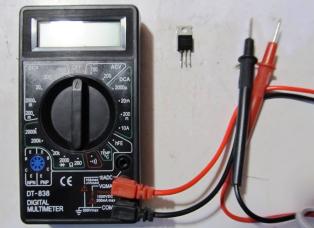
In addition, the device has a range of “ringing” diodes and transistors, and also measures the gain of the transistors. Various modifications of devices of this series have thermocouple temperature meter or built-in sound generator. The price of such multimeters is small, about 5.5 ... $ 6.
Multimeters are available and more expensive, every two or three. Such a device, in addition to the above, can measure the capacitance of capacitors, also has a temperature meter, and an integrated low-frequency frequency meter (measurements in the audio frequency range). Of course, there is a socket in this device for measuring the parameters of transistors (only gain).But all sorts of additional functions have to be used not very often, therefore multimeters of the first type, which are cheaper, are preferable. See here I will give detailed instructions on how to use the multimeter.

A multimeter is good, but it allows you to measure only the DC mode of the circuit, check the installation and the health of discrete parts (transistors, diodes, resistors, capacitors, coils).
When you need to figure out where and how the signal passes or does not pass, then only an oscilloscope can help out. With it, you can learn almost everything about the signal: what is the amplitude and frequency of the signal, to which stage of the circuit it goes, or just the opposite. You can also see the shape of the signal, all its changes, transformations, if any, then see the distortion.
The oscilloscope is a very versatile device, but it has one serious drawback - the high price. This primarily relates to modern portable oscilloscopes, which have a very wide bandwidth, have internal memory for remembering the waveform, and the ability to connect to a personal computer. It is very tempting, but is all this necessary for a beginner radio amateur?
At first, you can recommend to buy used electronic tube oscilloscopefor example C1-101, C1-74 or the like. The bandwidth of these oscilloscopes is 0 ... 5 MHz, with a channel sensitivity of 0.05 V / cm, which in most cases is sufficient in excess. At the same time, the price of such a device is not more than $ 40 ... $ 50, which is also not fatal.
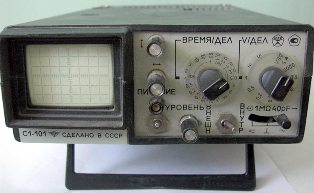
In some cases, it is quite simple to verify the presence or absence of a signal. The simplest probes can easily cope with this task. The simplest and most commonly used is a regular earphone (headphone) with a capacitor. Often such a probe was called a "pocket oscilloscope." If the signal is sound frequency, then it can be heard with the help of this probe. In this case, a headphone is desirable with a high resistance of at least 1 kΩ.
For the same purpose, a small power amplifier can be recommended. With its help it is also possible to track the passage of the signal, if, of course, it is in the audio range.
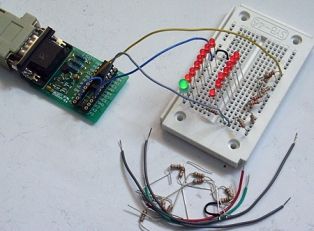
Everything will be simple in the case of establishing and repairing digital circuits, even if they are assembled using microcontrollers. In such a situation, sufficiently comprehensive information, up to the capture of single pulses, allows one to obtain logic probe. Such probes in the circle of repairmen are often called a "trap".
Therefore, to start practicing electronics it is not at all necessary to have a complete “gentlemanly” set of tools and expensive appliances. If you want, then you can limit yourself to small. So, good luck!
We recommend reading:Where to start studying electronics
See also at bgv.electricianexp.com
:
